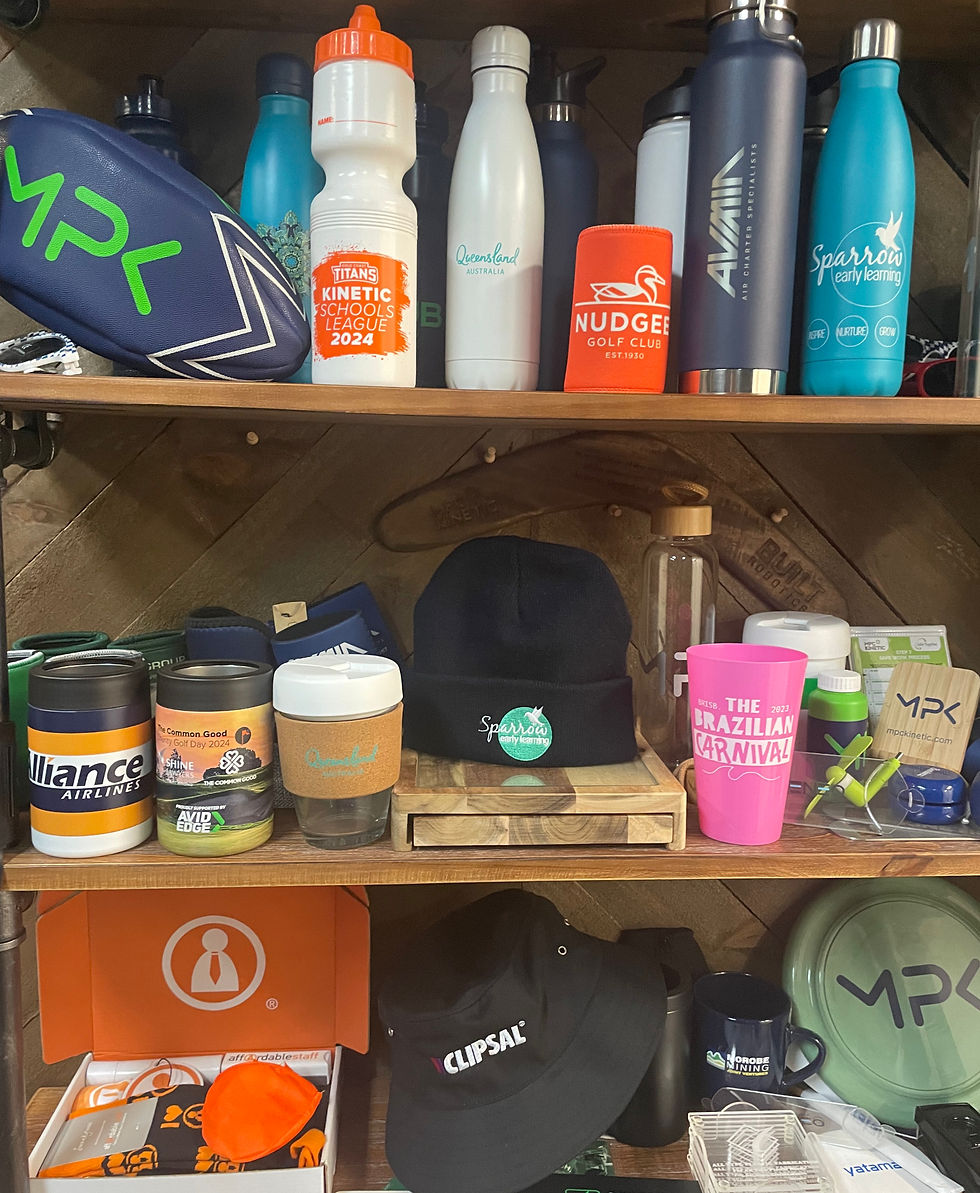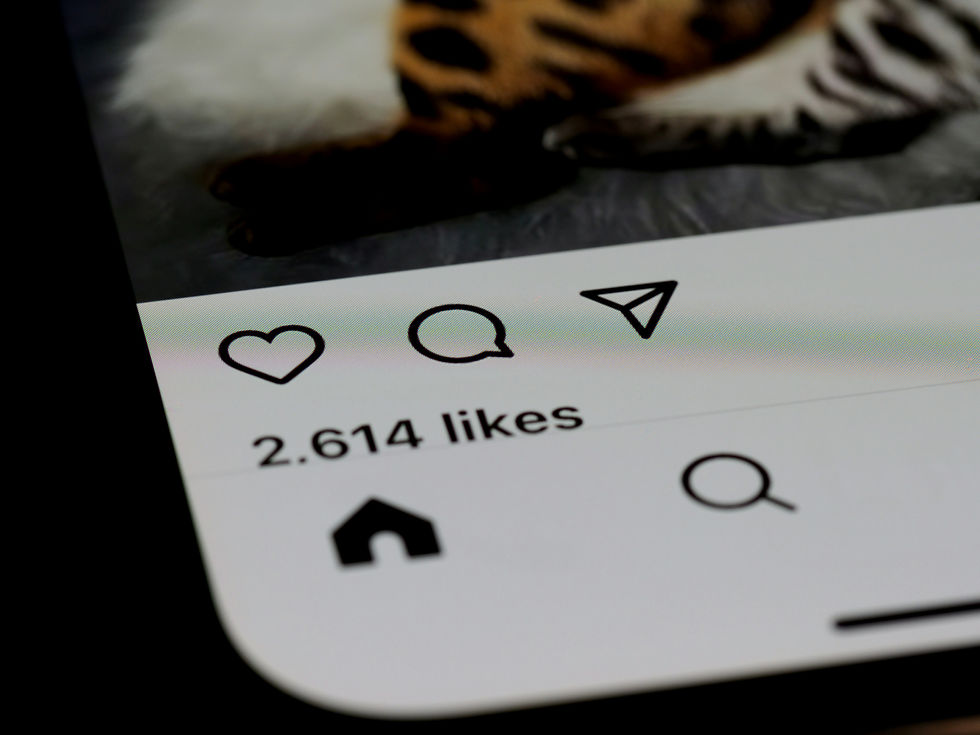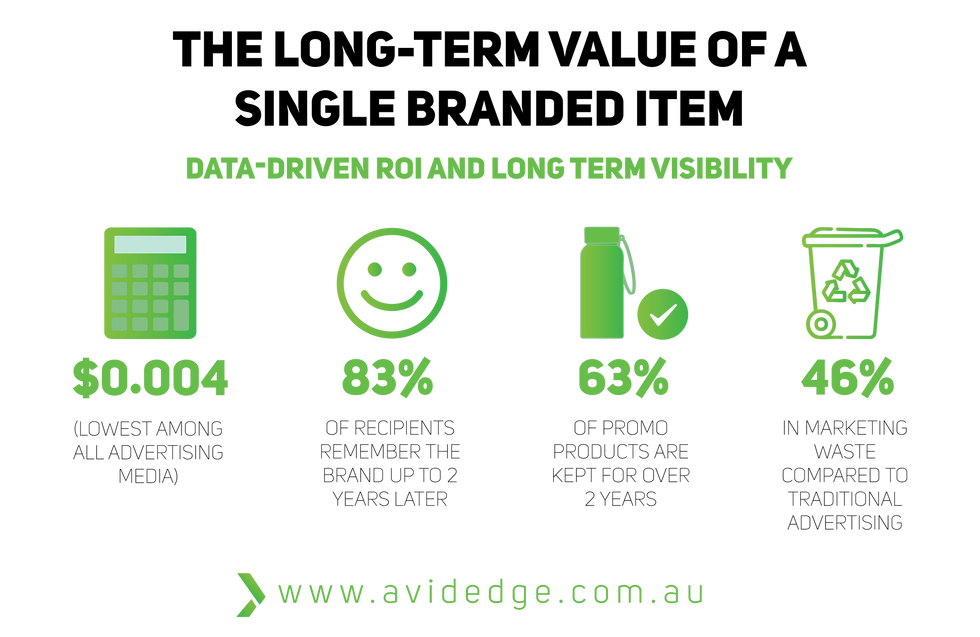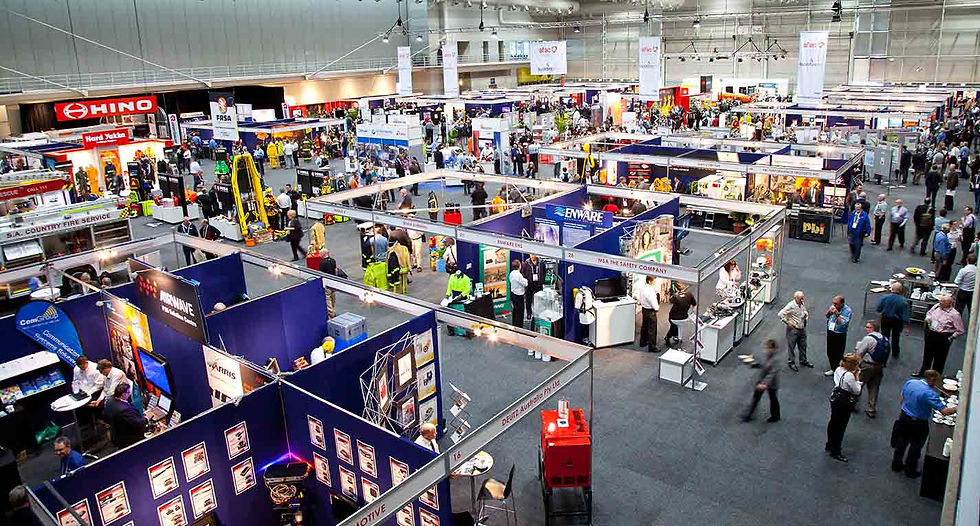Think Promotional Products Are Outdated? Here’s Why Top Corporates Keep Using Them
- Avid Edge Team

- Sep 10, 2025
- 3 min read
In an increasingly digital world, it's easy to overlook the enduring impact of something tangible. Yet, promotional products (we're talking branded pens, tech gadgets, notebooks, and premium drinkware amongst thousands of other items) continue to be a cornerstone of brand strategy for major corporations. And it’s not just for nostalgia’s sake. The reason is simple: the return on investment is proven, measurable, and surprisingly powerful.

Promotional Products Still Work—And Here’s the Data to Prove It
According to the Advertising Specialty Institute (ASI), 83% of people remember the brand on a promotional product, even after two years. Compare that to the average 3-second attention span for a social media post or a digital ad, and the value becomes clear.
Even better, consumers are nearly 2.5 times more likely to have a positive opinion of a brand after receiving a promotional item.
For corporations dealing in multi-million-dollar contracts and long sales cycles, brand recall and positive opinion isn’t just important, it’s essential.

Marketing Managers Favour Digital/Social
Marketing Managers and other key players tend to favour digital marketing when determining annual marketing budgets. A typical marketing budget might see 40-60% allocated on digital marketing (including SEO, PPC, content, social media), 15-25% for traditional marketing (think print, broadcast and direct mail advertising), 10-20% for events/sponsorships, and 5-15% for research, analytics, and tools (because the Canva + and Chat GPT subscriptions have to be in the mix these days!). This marketing budget breakdown varies by industry, company objectives and business maturity.
BUT For Long Term Retention and ROI Promo is Better
But for long term retention and ROI promotional merchandise outshines digital marketing efforts. Branded promotional merchandise provides continuous visibility. This is the polar opposite of a social post that disappears after a scroll or a click, or is forgotten entirely when replaced by newer, fresher content in the feed.
A high-quality promotional product can stay on a desk, in a home office, or travel with someone for months or even years. One ASI study found that the average promotional product is kept for around 8 months, with nearly half of recipients passing items on, extending reach even further.
If your promotional product ends up on a client’s desk or in their daily routine, it’s ongoing brand exposure at no additional cost.

Corporate Use Cases: Where the ROI Really Adds Up
Large enterprises leverage promotional products strategically at:
• Trade shows & conferences – Where standout items can draw traffic and create memorable interactions.
• Employee onboarding & retention – Where thoughtful, branded items can improve engagement and sense of belonging.
• Client gifts & relationship building – Where premium products reinforce value, professionalism, and appreciation.
• Executive summits or virtual events – Where branded kits add a personal touch to high-level interactions.
Each of these scenarios offers multiple touch points, and promotional items serve as physical brand ambassadors across them all.

Cost Per Impression (CPI): A Hidden Advantage
In traditional advertising, Cost Per Impression (CPI) is a key metric. Promotional products routinely outperform digital, TV, and print advertising in this category. Every year, the Advertising Specialty Institute (ASI) produces its “Global Ad Impressions” study based on thousands of on-person and online surveys that provide insight into the reach and influence of these products.
Recent ASI data shows that:
• Branded outerwear generates over 6,000 impressions over its lifetime.
• Drinkware averages 1,400+ impressions.
• Bags deliver the lowest CPI of any ad medium.
For corporations managing large-scale marketing budgets, these numbers stack up in favour of branded merchandise.

What Smart Corporations Know
The best-performing companies don’t think of promotional products as giveaways—they think of them as brand assets. They invest in high-quality, useful, and aligned products that:
• Reflect their values
• Reinforce their message
• Create emotional and practical connection
This is not about slapping a logo on a cheap pen. It’s about delivering something worth keeping that makes the recipient think: “This company gets it.”
Conclusion? Promotional Products Aren’t Just Relevant—They’re Strategic
In today’s crowded marketplace, attention is hard to earn and even harder to keep. Promotional products bridge that gap by combining tactile value, brand visibility, and emotional connection in a way digital ads simply can’t.
For corporations that care about long-term brand equity, engagement, and measurable ROI, “swag” isn’t just a nice-to-have—it’s a smart investment.



Comments